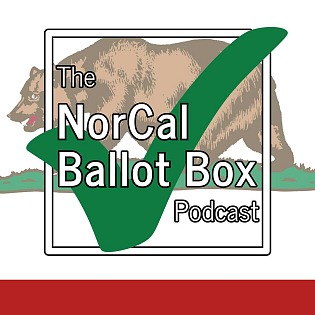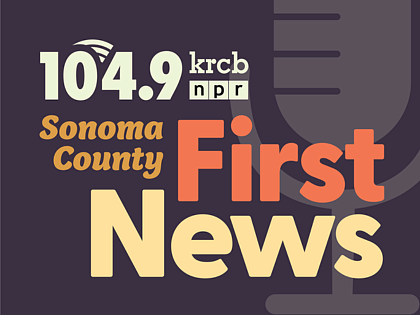Sonoma County’s three groundwater sustainability agencies formed back in 2017. The state has now approved long-awaited plans to keep Sonoma County and Napa Valley's underground aquifers full far into the future.
 Petaluma Valley GSP Cover
Petaluma Valley GSP Coverphoto credit: Petaluma Valley GSA
The groundwater sustainability plans were prepared to be compliant with a state law that went into effect after the previous drought in 2015. The Sustainable Groundwater Management Act, known as SGMA.
Marcus Trotta is a groundwater expert for Sonoma Water, who served as project manager for the recently approved Santa Rosa Plain and Petaluma Valley groundwater sustainability plans.
"So there's one agency in each basin that's required to submit the plans, implement the plans, and then achieve sustainability within the basin within 20 years after submitting those plans," Trotta said.
The plans have a specific goal, Trotta said.
"To provide sustainable groundwater conditions to make sure that there's water available in the aquifer for rural residents, agricultural users, municipal groundwater users within the basin, going forward, and that take into account future changes in land use to make sure that groundwater's considered in those decisions," Trotta said.
Basins the state designated as critically over drafted were required to submit their plans to the State’s Department of Water Resources in January of 2020, Trotta said.
"In Sonoma County, we don't have any basins that are considered critically over drafted, and so our plans were due to be completed in January of 2022," Trotta said.
Over 100 sub-basins in California have a groundwater sustainability agency due to a combination of factors, including the level of development and local hydrology within the sub basin.
Plans are now set to keep enough water in underground aquifers in the Santa Rosa Plain, Petaluma Valley, Sonoma Valley and Napa Valley.
As well as a year-long review, the planning process itself took over four years, including hundreds of meetings. Trotta said the plans take a variety of groundwater factors into account.
"Groundwater budgets for the basins, how much water is estimated to be being used and recharged in the basins," Trotta said. "What types of thresholds and considerations should be used for things like groundwater levels and depletion of surface waters in the basin?"
Paul Gosselin, a groundwater expert with the state water agency, said even with approval, the plans are meant to be adaptable.
"No plan’s going to be totally perfect," Gosselin said. "We're going to expect plans to adapt over time. Additionally, we will be reviewing for approved plans, their annual reports, and particularly the five year updates."
As Gosselin noted, SGMA requires sustainability within 20 years.
"For non critically over drafted basins we're expecting them to reach their sustainability goals by 2042," Gosselin said. "Some are advancing them a lot sooner than that."
50 year hydrology projections are also integrated into the plans. Something Gosselin said is needed, due to changing environmental factors, like drought or intense atmospheric rivers.
"The climate's changed a lot faster than we anticipated," Gosselin said. "Constant increased temperature is going to create, and has created its own water demand. So we're expecting that during plan implementation, as more data comes out as we evaluate water supply reliability, and if that obviously may change, plans are going to have to adjust to the reality of climate change."
Trotta said the plans include two major project categories.
"Groundwater sustainability agencies have a kind of a suite of projects that include both conservation as well as recharge type projects that can be used to improve our water supplies and increase our resiliency by doing a better job of capturing winter water and utilizing some of that water to recharge our groundwater basin so that water's available during the summer and dryer periods when it's needed," Trotta said.
Gosselin said recharge projects can take a variety of forms.
"Some from flood," Gosselin said. "Some are managed aquifer recharge projects on working lands, others are recharge basins and others, so they run the gamut."
"We've issued a lot of grants to groundwater sustainability agencies because it is foundational to a lot of basin plans to increase and improve, recharge, balanced against demand reduction," Gosselin said.
While Gosselin does say there are many existing recharge projects that have long gone under the radar, he said the increasing prominence and importance has prompted a number of moves in Sacramento to fast track and approve new groundwater recharge projects across the state.
While sustainability efforts like recharge and conservation are important aspects of the plans, carrots are not the only tool available to local GSA’s, Trotta said.
"The groundwater agencies also do have the authority to limit pumping in the future," Trotta said.
Trotta said Sonoma County’s three groundwater agencies have applied for state grants totaling around 20 million dollars. One of the main sticks the agencies have at their disposal are fees.
"Fees are based on the amount of estimated or measured groundwater use by different groundwater users," Trotta said. "The cities are required to meter and report how much groundwater they pumped, and so their fees are based on their reported amount of groundwater pumping."
Trotta noted that fees also are needed to cover operating costs.
"The groundwater sustainability agency is assessing fees to those cities that they would then pass onto their customers through their water bill," Trotta said. "And then for folks that are outside of cities and have their own well, those users are getting assessed based on estimated groundwater."
For rural users, fees will be assessed via property taxes; with the current rate for all three agencies in Sonoma County set at $40 per acre foot. An acre foot being equivalent to about 326 thousand gallons of water.
The groundwater usage of a rural residence with a home garden and landscaping is estimated to be a half acre foot, a yearly fee of 20 dollars.

 Live Radio
Live Radio




